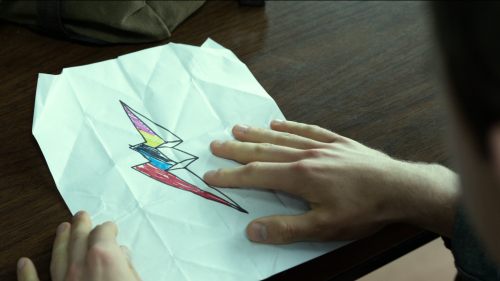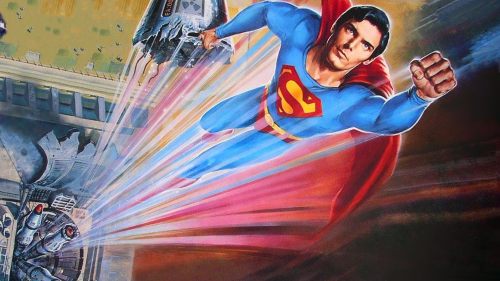Say Something Nice: DOOM (2005)
While my days in the early ‘90s were mostly spent playing basketball and wearing out my family’s VCR, there was one activity that I kept sacred and secretive in my solitary entertainment: When my family went to sleep, I would sneak out of my bed (stuffed animal in tow) and boot up our Microsoft computer to play Doom. Watching the title rise up from pixelated fire alongside ardent and ominous music made my heart race more than any amount of Warheads or Ecto-Coolers I consumed that year. Doom made me feel like I was breaking all the rules, and like many others, it was my introduction to first-person shooter games.
Doom was revolutionary in several ways, mostly in regards to its depiction of violence and immersive 3D graphics. Some of the programmers’ goals were to create a game complete with a sense of tension and urgency by manipulating lighting in dark corners, sound design to hear the demons before gamers visually detect them, and increased tempos in the music to emphasize danger as well as time constraints to reach the desired red panels for level advancement. Players assumed the role of an anonymous space marine who slaughters demons from Hell, alternating between various weapons such as a pistol, shotgun, chainsaw, rocket launcher, and of course, the holy BFG 9000 or “Big Fucking Gun”. While the graphics and gaming structure were advanced, the storyline was simplistic along with the convenient respawning feature which allowed the marine to come back to life without restarting the level, all while guns were still conveniently abundant for demonic slaughter.
So, what happens when a franchise is ignited by a video game that 15 to 20 million people played? You make a movie, of course! Joining the silly cinematic ranks of Super Mario Bros. and Street Fighter, Universal Pictures distributed the film adaptation in 2005 starring Dwayne Johnson and Karl Urban. That’s right, 2012’s version of Judge Dredd and WWE’s The Rock tag-teaming evil creatures on Mars. What could possibly go wrong? Well, for one thing, the plot is completely absurd and hilariously convoluted to the point where the writers deemed it necessary for characters to explain every situation in depth as if the audience consists of unheeding toddlers. The acting is painfully bland and the flaccid attempt at comedy by way of dick jokes and strip search jokes is an exhausting excuse to sexualize every female in the film. The script is probably the most painful aspect because the dialogue tries to merge scientific terminology with philosophical jargon that is more foolish than intellectually stimulating. Johnson’s character also directly references Predator when he commands his crew, “if it breathes: kill it”, slightly altering the phrase, “if it bleeds, we can kill it.” Other callbacks include the aesthetics which mirror Doom 3 in their space-station-like corridors but also resemble a subpar version of the set from Aliens.
Doom takes place in the year 2046, following the discovery of a portal located in the Nevada desert that leads to an ancient city on Mars, later housing a research facility entitled Union Aerospace Corporation. After receiving a distress call sent from a research scientist, a group of Marines, who in their leisure time enjoy playing baseball with oranges and games on a rad updated version of the Sega Game Gear, embark on a search-and-rescue mission to neutralize any threat. They realize the group has been conducting experiments using a 24th chromosome (C24) found in humanoid remains. When injected into human subjects, transformations either lead to superhuman abilities or a mutant-like monster in those possessing a predisposition towards violent behavior. Therefore, instead of fighting demons, the marines battle the scientists who have turned into decayed zombies and aggressive imps.
Completely justified in its 19% score on Rotten Tomatoes, Doom takes well over seventy minutes to arrive at its one redeeming factor: the first-person shooter sequence. While the film is directed by renowned cinematographer Andrzej Bartkowiak (Romeo Must Die, Exit Wounds), the five-minute-long continuous shooter sequence is directed by visual effects supervisor, Jon Farhat. The scene took fourteen days to shoot and a planning period of three months. Components of live action shooting, beautifully crafted special effects makeup (courtesy of the legendary Stan Winston), constructed sets, explosions, stunt players, and CGI all culminate into a visual aesthetic that is pretty advanced for the early 2000’s. The detail and amount of time it takes orchestrating the sequence is a labor of love, and while it is upsetting to not have more FPS shots in the film, it makes sense given the time period. These weren't the days where you could just strap on a GoPro and get that badass effect seen in Hardcore Henry.
In order to recreate the video-game movements from a first-person shooter point-of-view, whip panning techniques were used to manipulate the camera so that the audience feels immersed in the experience. The production team would leave the camera in a specific place after filming for the day, only to return later and pick up where it stopped. This was most effective in transition sequences where doors would open to new rooms. The whip pan technique allowed peripheral surprises around corners and with each turn of the head. One challenge was the aspect ratio of the height of the screen to its width. Utilizing a computer screen for the video game, there was more latitude for the gun usage and space in the distance for action sequences. With film, the team had to calibrate the positioning of the gun by dropping it out of the frame at times and even using a scope POV because they were working with the obstacle of a wider screen where weapons could eclipse action. So, the camera work was more experimental and playful to obtain that original immersion response.
The unnecessarily embellished storyline and dreadful acting unfortunately trump any notion of Doom being a classic film. It may sit on the dusty shelves of some die-hard gamers or fans of The Rock, but it’s by no means a must-see movie. However, it is filled with gnarly body horror thanks to Winston’s FX team and a shooter sequence that at least gives audiences the nostalgic experience from the legendary game that we all know and love.



